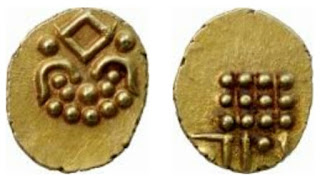After the Turks, the Europeans took the charge of invading our country, this time via sea routes. From the 16th century European powerhouses like Portuguese, French, Spain, British and Dutch started to establish their factories across India. One of them was the Dutch who wanted to control trade of Kerela region. But their dreams were shattered when the young King of Travancore crushed them in the Battle of Colachel in 1741. His name was Marthanda Varma.
Marthanda Varma was the founding monarch of the southern Indian Kingdom of Travancore (previously Venadu) from 1729 (when he was 24 years old), until his death in 1758. He was succeeded by Rama Varma. He adopted a European mode of discipline for his army and expanded his kingdom northwards, to what became the later State of Travancore. He built an army of 50,000 Nair men and designed a well-organized war machine. His alliance in 1757 with the ruler of Kochi (Cochin) against the northern Kingdom of Calicut, enabled the kingdom of Kochi to survive.
Travancore under Marthanda Varma made a deliberate attempt to consolidate its power by the use of Indian Ocean Trade. There was European monopoly in Indian Ocean spice trade. The constant Dutch blockade of Malabar Coast was very normal. He wanted to change this system.
Marthanda Varma's reign was one of constant warfare, against opponents both inside and outside is territory. He realized that Dutch power in Kerala stemmed from their flourishing spice trade at the port of Kochi. He set out to conquer the major spice producing areas supplying cargo to Kochi.
During a visit to Cochin in 1739, the Dutch Governor of Ceylon, Gustaff Willem Van, made an attempt to discuss and offer his terms to Varma to put an end to his expansionist policy including the Malabar Kingdoms. But Marthanda Varma refused to agree on any terms, which was a trigger to the Battle of Colachel in 1741.
In 1741, a Dutch artillery force landed at Colachel from Ceylon and captured up to Kottar and advanced against Kakulam, Travancore's capital supported by strong artillery. In the following battle, the Travancore forces won a resounding victory over the Dutch and resulted in total carnage for the invader.
This was the first time a major European power was decisively defeated in Asia.
The enemy surrendered on August 14, 1741. It is also believed that the Dutch never recovered from this defeat and the empire soon started declining after it.
Victory Pillar, in remembrance of the victory against the Dutch in 1741, near the coast of Colachel.
De Lannoy, a Captain, who was captured in the battle subsequently earned the trust of the king, who made him an officer in the Travancore military. He later trained the Travancore Army and in due course of time became a valiant and successful commander of the same army that had defeated the Dutch forces. He modernized the army by introducing firearms and artillery. After declaring a state monopoly on pepper in Travancore in 1743, between then and 1752, the king annexed Quilon, Kayamkulam, Thekkumkur and Purakkad to Travancore, thereby delivering a serious blow to the commerce of the Dutch. Eventually, Travancore challenged and broke the Dutch blockade of the Kerala coast.
Travancore became a prominent city in Kerala under Marthanda Varma. He undertook many developments during his reign. In January 1750, he decided to ''donate'' his kingdom to the last Tiruvadi Sri Padmanabha (family deity) and rule as the deity's ''vice-regent''. His policies were continued in a large measure by his successor Rama Varma.
Coins of Marthanda Varma


















No comments:
Post a Comment
Any inputs or feedback is welcome!